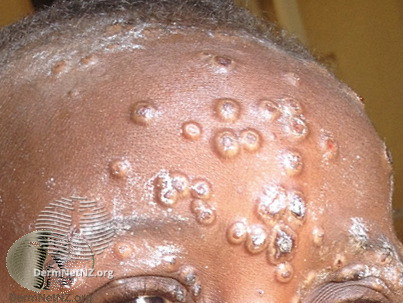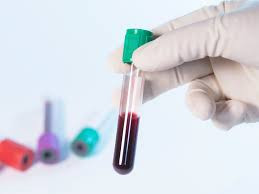Definition
Rubella is an infection caused by a virus, often marked by a distinctive red rash and fever. Despite the availability of vaccines to prevent rubella, the disease persists in regions where vaccination coverage may be insufficient. This is notably the case in parts of Africa, the Middle East, South Asia, and Southeast Asia. Consequently, congenital rubella syndrome remains a significant concern, impacting over 100,000 newborns annually. Approximately 80% of these cases occur in Africa, as well as in several countries across South and Southeast Asia.
Causes
Rubella, caused by the rubella virus, is distinguished by its RNA viral structure. Despite its colloquial name, "German measles," it differs from measles, as it stems from distinct viral agents rather than the measles virus. Transmission primarily happens through respiratory droplets expelled during coughing or sneezing, facilitating person-to-person spread. Humans serve as the sole natural reservoir for this virus. Additionally, pregnant women infected with rubella can transmit the virus to their developing fetus, leading to potential complications.
A person infected with rubella can transmit the disease to others, beginning approximately one week before the rash appears and continuing until 5-7 days after its onset. Transmission risk peaks during the presence of the rash. Interestingly, even individuals who remain asymptomatic, accounting for 25-50% of cases, can still spread the virus to others. The incubation period, spanning from initial viral exposure to symptom onset, typically lasts around 14 days, ranging from 12 to 23 days.
Risk factor
Individuals lacking vaccination against rubella are susceptible to contracting the disease. Particularly vulnerable populations include:
- Residents of regions where rubella is endemic
- Those who have not received immunization with MMR (measles, mumps, rubella) vaccine
- People with immunodeficiency disorders or conditions compromising their immune function
- Travelers venturing to countries where rubella is endemic
Symptoms
The majority of rubella cases manifest as mild illness, particularly among children. A considerable proportion, ranging from 25 to 50%, of those infected do not have discernible symptoms. In instances where symptoms do manifest, the first symptom that typically presents is a rash. This rash manifests in 50-80% of affected individuals and typically initiates on the face before spreading to other body regions within 24 hours. The rash lasts up to three days. Preceding the onset of the rash, individuals may experience additional symptoms, including:
Manifestations that may precede the onset of the rubella rash encompass:
- Subfebrile fever
- Sore throat
- Headache
- Mild redness or pinkness in the eyes
- Fatigue
- Loss of appetite
- Swelling or enlargement of lymph nodes, typically observed behind the ears or at the back of the neck
- Cough
- Cold
- Joint discomfort notably prevalent in approximately 70% of women affected by rubella, with joint inflammation being a rare occurrence among children and men
Adults and older children often present with symptoms such as headaches, red eyes, and fatigue prior to the emergence of the rubella rash. However, if the rubella virus infects a fetus in pregnancy, it can pose significant dangers, potentially impacting the senses and cardiac health of the developing baby. A classic triad of manifestations associated with congenital rubella infection includes cataracts, congenital heart disease, and sensorineural deafness. Moreover, newborns affected by rubella are susceptible to low birth weight, anemia, liver and spleen enlargement, and meningeal inflammation.
Diagnosis
Diagnosing rubella is typically done by doctors through a comprehensive approach. This includes assessing your symptoms, vaccination history, travel records, and potential contact with individuals displaying fever and rash. A physical examination is often conducted as well. Confirmation of rubella infection commonly involves a PCR (Polymerase Chain Reaction) test, which detects the virus in samples collected from throat and nasal swabs. Additionally, blood tests may be performed to check for the presence of antibodies specific to the rubella virus.
Management
In instances where there is suspicion of rubella or if you are diagnosed with rubella, you will be isolated to help mitigate viral transmission to others. The isolation is typically carried out until 7 days after the emergence of the rash.
Treatment options for rubella do not include specific medications such as antiviral drugs to treat or hasten recovery. In cases of mild illness, the primary approach involves bed rest, coupled with the use of medications like acetaminophen to alleviate fever and manage symptoms.
Pregnant women affected by rubella and desiring to proceed with their pregnancy may receive hyperimmune globulin, an antibody therapy capable of combating the infection. While this intervention can mitigate symptoms, it does not eradicate the risk of the baby developing congenital rubella syndrome.
Complications
While infrequent, rubella can cause severe complications, such as brain infections and thrombocytopenia-induced bleeding. However, the gravest complication of rubella manifests in unvaccinated pregnant women, where fetal exposure to the virus during pregnancy poses a significant risk of harm to the fetus. Pregnant women can transmit the virus to their developing fetus, disrupting normal fetal development and potentially culminating in serious defects. This scenario may lead to miscarriage or neonatal death.
The risk of severe congenital anomalies escalates if rubella affects a pregnant woman during 12 weeks of gestation or within the first trimester. Termed as congenital rubella syndrome, it encompasses a spectrum of serious birth defects. Among the prevalent manifestations of congenital rubella syndrome are:
- Heart disorders
- Hearing disorders
- Visual disturbances (cataracts)
- Intellectual disability
- Hepatic or splenic complications
- Low birth weight
- Dermatological manifestations, including rash at birth
Infrequent complications associated with congenital rubella syndrome encompass:
- Glaucoma
- Cerebral damage
- Thyroid dysfunction or other endocrine disorders
- Lungs inflammation
While the symptoms can be managed, a definitive cure for this syndrome remains elusive, so women need to get vaccinated before pregnancy. Furthermore, infants affected by congenital rubella syndrome could spread the virus for up to a year after birth.
Prevention
The most effective way to prevent rubella is through vaccination, typically administered as part of the MMR (measles, mumps, rubella) vaccine. This vaccine provides protection against measles, mumps (parotitis), and rubella, known as German measles. Notably, there is no standalone vaccine specifically targeting the rubella virus. The MMR vaccine is widely regarded as safe and effective, with no association with autism. A single dose of the MMR vaccine can confer up to 97% protection against rubella upon exposure to the virus.
Routine MMR vaccine is advised for children between 12 to 15 months of age, followed by a second dose between 4 to 6 years or at least 28 days following the initial dose. Additionally, 6-11 months old infants scheduled to travel to rubella-endemic countries are recommended to receive a single MMR vaccine dose before departure. The advantages of MMR vaccination for children are:
- Shielding children against rubella, measles, and mumps, potentially severe illnesses
- Preventing the transmission of rubella to pregnant women
- Preventing the onset of fever and rash associated with rubella infection
- Minimizing absent school days due to rubella-related illness
Common, typically mild side effects of the MMR vaccine include:
- Fever
- Pain, redness, and swelling at the injection site
- Temporary joint pain and stiffness
- Mild rash
Furthermore, adults born in or after 1957 are encouraged to receive at least one dose of the MMR vaccine. This recommendation is significant for specific populations, including students at educational institutions, healthcare professionals, international travelers, and women of childbearing age. Pregnant women lacking evidence of rubella immunity should receive vaccination promptly after giving birth. It's important to note that MMR vaccine should not be given to pregnant women due to the presence of live, attenuated virus components.
For women contemplating pregnancy, ensuring rubella immunity through vaccination before conception is crucial. It's advisable to wait for at least 4 weeks post-vaccination before attempting pregnancy.
Pregnant women who haven't received the MMR vaccination are cautioned against traveling to rubella-endemic regions or areas with rubella outbreaks, particularly if the gestational age of their pregnancy is under 20 weeks.
To mitigate transmission risks, if you are diagnosed with rubella, you should inform your social circle, including friends, family, and co-workers, especially if pregnant women are present around you. Likewise, parents should notify their child's school if their child contracts rubella to prevent further spread.
When to see a doctor?
If symptoms suggestive of rubella manifest in you or your child, you should seek medical advice. Furthermore, if you are a pregnant woman and encounter potential exposure to rubella, you should consult a doctor promptly.
Looking for more information about other diseases? Click here!
- dr Hanifa Rahma
Rubella (German Measles, Three-Day Measles). (2022). Retrieved 25 April 2022, from https://www.cdc.gov/rubella/.
German Measles (Rubella): Causes, Symptoms, and Treatments. Healthline. (2022). Retrieved 25 April 2022, from https://www.healthline.com/health/rubella#german-measles-in-pregnant-women.
Rubella - Symptoms and causes. Mayo Clinic. (2022). Retrieved 25 April 2022, from https://www.mayoclinic.org/diseases-conditions/rubella/symptoms-causes/syc-20377310.
Leonor, MC., Mendez, MD. (2021). Rubella. Retrieved 10 May 2022, from https://www.ncbi.nlm.nih.gov/books/NBK559040/.












